Marine Iguana
- March 6, 2024
- 0 comment
The marine iguana, a fascinating reptile found exclusively in the Galapagos Islands, is renowned for its unique adaptation to aquatic life. Unlike most lizards, the marine iguana has evolved remarkable traits that allow it to thrive in the harsh coastal environments of the Galapagos. With its stout body and flattened tail, this species can grow up to 1.5 meters in length, making it one of the largest lizards in the region.
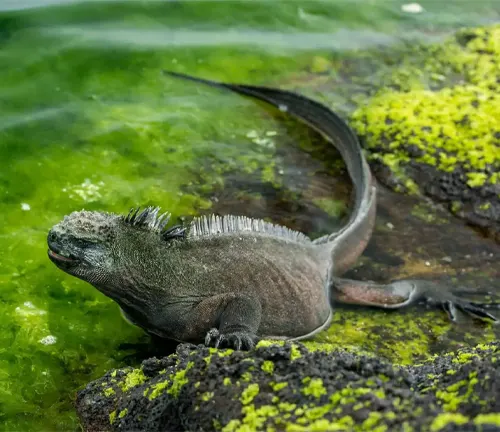
However, what truly sets the marine iguana apart is its striking coloration, which ranges from black to grey, with occasional flashes of red and green, particularly during mating season. These reptiles have developed specialized adaptations for survival, including sharp claws for gripping onto rocky surfaces, streamlined bodies for efficient swimming, and nasal glands that enable them to expel excess salt ingested from seawater.
Despite their clumsy appearance on land, marine iguanas are surprisingly agile swimmers, capable of diving to depths of over 15 meters in search of their primary food source: marine algae. Breeding among marine iguanas typically occurs during the dry season, where males engage in territorial disputes to attract females. Despite their unique adaptations, marine iguanas face threats from introduced predators and human disturbances to their coastal habitats. Conservation efforts are crucial for safeguarding the future of these iconic reptiles, ensuring their continued presence in the Galapagos ecosystem.
| Specifications | Details |
|---|---|
| Scientific Name | Amblyrhynchus cristatus |
| Length | Up to 1.5 meters |
| Weight | Up to 13 kilograms |
| Coloration | Black to grey, with hints of red and green |
| Habitat | Coastal areas, rocky shores, lava fields |
| Range | Galapagos Islands |
| Diet | Herbivorous, primarily feeds on marine algae |
| Lifespan | Approximately 5-12 years in the wild |
| Conservation Status | Vulnerable (IUCN Red List) |
| Notable Adaptations | Nasal glands for expelling excess salt, streamlined body for swimming, sharp claws for gripping rocks |
| Unique Traits | Only marine lizard species in the world, capable of diving and swimming in ocean waters |
The Unique Reptile of the Galapagos Islands
The marine iguana, scientifically known as Amblyrhynchus cristatus, is a fascinating creature native to the Galapagos Islands, located in the Pacific Ocean. Renowned for its unique adaptation to aquatic life, this reptile stands out as one of the only marine lizards in the world.
Appearance and Characteristics
Size and Coloration
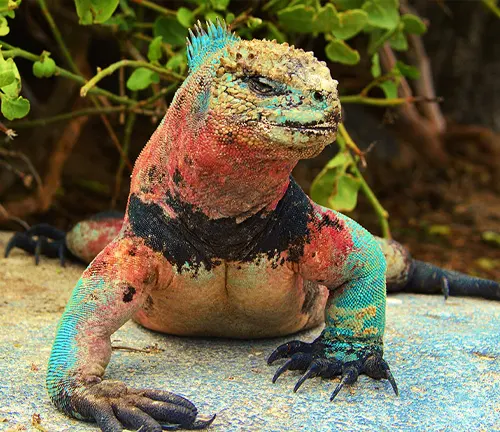
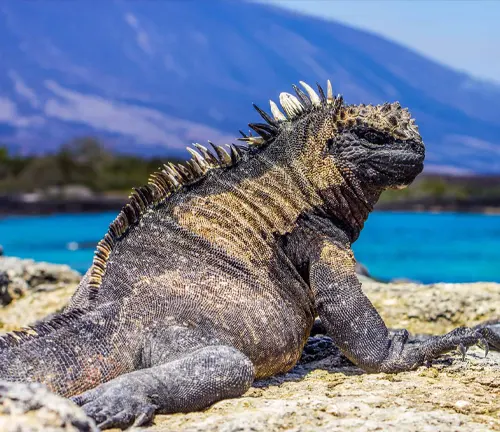
Size
Marine iguanas can reach lengths of up to 1.5 meters, making them one of the largest lizard species found in the Galapagos Islands. However, size can vary slightly among individuals and populations.
Coloration
Marine iguanas display a striking array of colors, ranging from black to shades of grey, with some individuals exhibiting patches of red or green, particularly during the breeding season. The variation in coloration is thought to be influenced by factors such as age, sex, and environmental conditions.
Adaptations for Survival

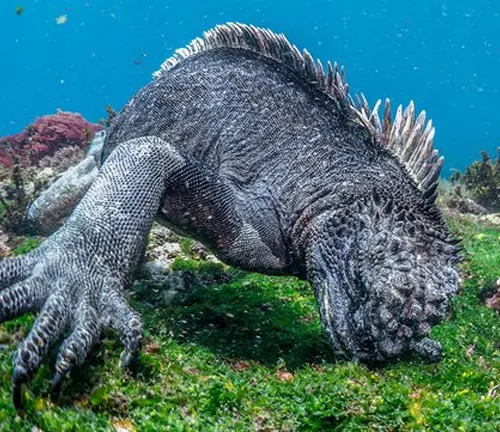
Nasal Glands
One of the most remarkable adaptations of marine iguanas is their specialized nasal glands, which enable them to expel excess salt ingested from seawater. This adaptation is crucial for maintaining osmotic balance in their bodies, as marine iguanas often consume seawater while foraging for marine algae.
Streamlined Body
Marine iguanas have evolved a streamlined body shape, with flattened tails and reduced limbs, to facilitate efficient swimming in their coastal habitat. This adaptation allows them to navigate through the water with ease, using their powerful tails to propel themselves forward.
Sharp Claws
Equipped with sharp claws on their feet, marine iguanas are well-suited for gripping onto rocky surfaces along the shoreline. These claws enable them to navigate treacherous terrain and secure their footing while foraging for food or basking in the sun.
Camouflage
The dark coloration of marine iguanas serves as effective camouflage against predators, allowing them to blend seamlessly into their rocky coastal environment. This cryptic coloration helps them avoid detection while basking on the shores or foraging for food among the rocks.
Behavioral Adaptations
Marine iguanas exhibit various behavioral adaptations to cope with their harsh coastal habitat, including thermoregulation through basking in the sun and social behaviors such as territorial displays during breeding season.
Distribution and Habitat
Galapagos Islands
The marine iguana is endemic to the Galapagos Islands, an archipelago located in the Pacific Ocean approximately 1,000 kilometers off the coast of Ecuador. Within this island chain, marine iguanas are found on several islands, each with its own unique habitat characteristics.
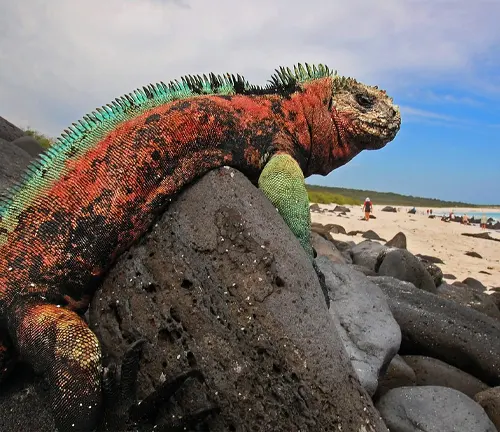
Coastal Areas
Marine iguanas inhabit a variety of coastal habitats within the Galapagos Islands, including rocky shores, lava fields, and mangrove estuaries. They are particularly abundant in areas with extensive intertidal zones, where they forage for their primary food source.
Island Specificity
While marine iguanas can be found on most of the major islands in the Galapagos, they exhibit some degree of island specificity in terms of distribution and habitat preferences. For example, populations on larger islands may have access to more extensive foraging grounds, while those on smaller islands may have limited resources and face higher competition for food.
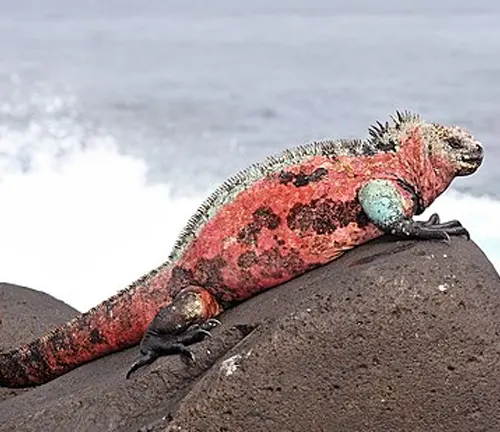
Intertidal Zone
Marine iguanas are uniquely adapted to life in the intertidal zone, where they spend much of their time foraging for marine algae. This habitat provides them with ample food resources and shelter from terrestrial predators, while also offering opportunities for basking in the sun to regulate body temperature.
Colonization of New Habitats
Marine iguanas have demonstrated the ability to colonize new habitats within the Galapagos Islands, including man-made structures such as docks and harbors. However, their distribution and abundance may be influenced by factors such as food availability, competition with other species, and human disturbances to their coastal habitats.
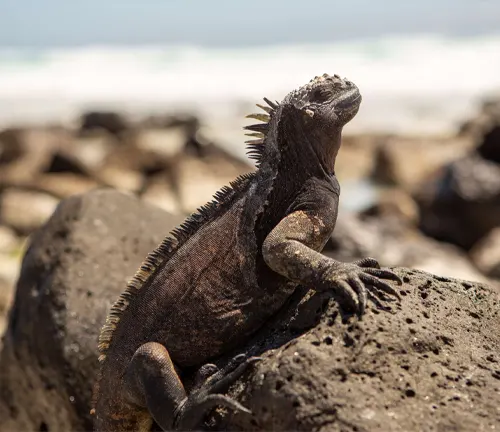
Feeding Behavior
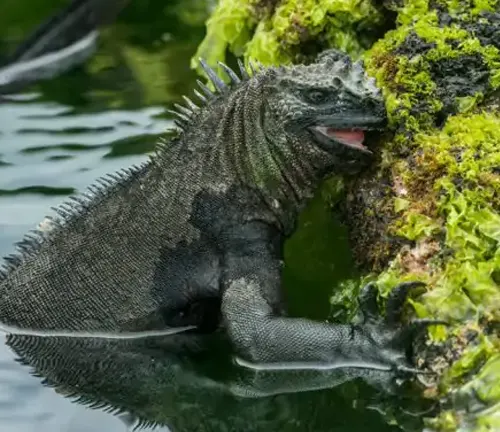
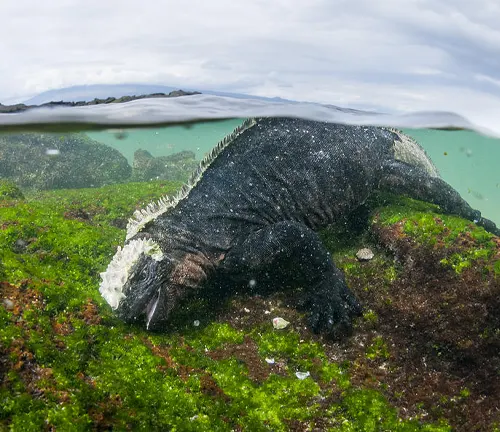
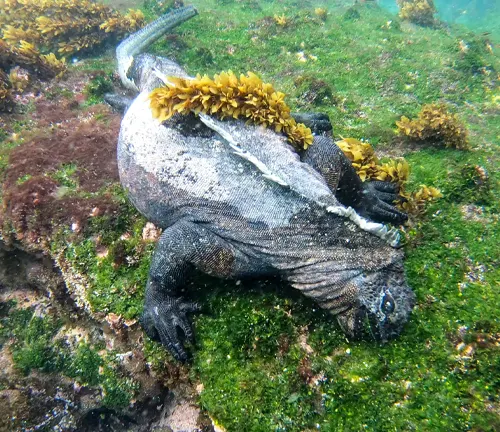
Herbivorous Diet
Marine iguanas are primarily herbivores, with their diet consisting almost exclusively of marine algae, particularly species of red and green algae found along rocky shores and intertidal zones.
Foraging Strategy
To feed, marine iguanas venture into the ocean during low tide, where they use their sharp claws and flattened snouts to scrape algae off submerged rocks and other surfaces. They are known to dive to depths of up to 15 meters in search of their preferred food.
Selective Feeding
While marine iguanas are opportunistic feeders, they exhibit selective feeding behavior, preferring certain species of algae over others. Their feeding preferences may be influenced by factors such as nutrient content, availability, and palatability of algae species.
Efficiency in Foraging
Marine iguanas have evolved specialized adaptations for efficient foraging, including streamlined bodies for swimming, powerful jaws for grasping and tearing algae, and dental morphology suited for processing plant material.
Feeding Ecology
The feeding ecology of marine iguanas plays a crucial role in shaping their distribution and abundance within the Galapagos Islands. They are key herbivores in the marine ecosystem, regulating algal populations and contributing to nutrient cycling in coastal habitats.
Seasonal Variation
The availability of marine algae fluctuates seasonally in the Galapagos Islands, influencing the feeding behavior of marine iguanas. During periods of low food abundance, they may adjust their foraging patterns or supplement their diet with other food sources, such as terrestrial vegetation.
Reproduction and Life Cycle
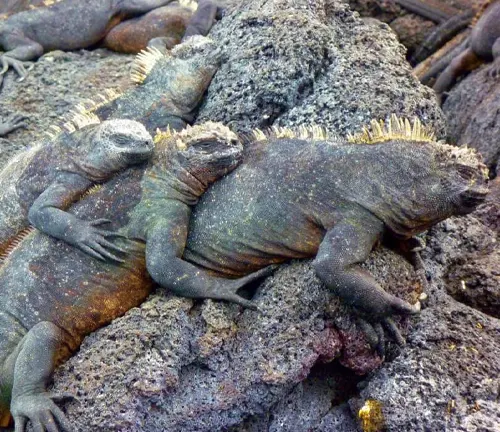
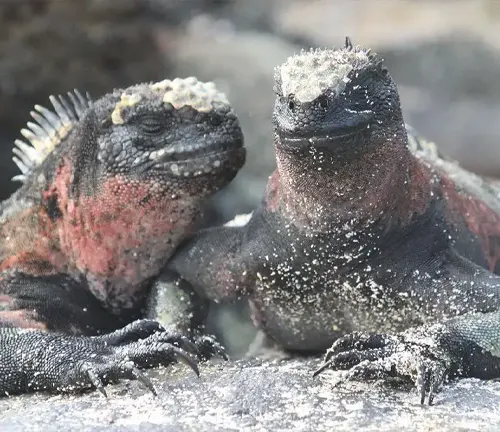

- Breeding Season: Breeding among marine iguanas typically occurs during the dry season, which corresponds to the period of highest food availability in the Galapagos Islands. The timing of breeding may vary slightly among populations and is influenced by environmental factors such as temperature and rainfall.
- Mating Behavior: During the breeding season, male marine iguanas engage in territorial displays to attract females. These displays often involve head bobbing, throat puffing, and aggressive behaviors towards rival males. Females select mates based on the quality of their displays and territory.
- Nesting: After mating, female marine iguanas dig shallow burrows or use crevices in rocky terrain to lay their eggs. Clutches typically consist of one to six eggs, depending on factors such as maternal size and age. The eggs are left unattended and must rely on environmental conditions for incubation.
- Incubation: The incubation period for marine iguana eggs ranges from 80 to 120 days, depending on environmental conditions such as temperature and humidity. The eggs are buried in the sand or soil of the nest, where they are protected from predators and other environmental threats.
- Hatching: Upon hatching, marine iguana hatchlings emerge from the nest and must fend for themselves. They are born fully formed and equipped with sharp claws for climbing and exploring their surroundings. Hatchlings may face predation from birds, crabs, and other predators during their early stages of life.
- Growth and Development: Marine iguanas undergo rapid growth and development during their first few years of life. They reach sexual maturity at around three to five years of age, depending on factors such as food availability and environmental conditions. Once mature, marine iguanas may breed and contribute to the next generation.
- Parental Care: Marine iguanas exhibit minimal parental care beyond nesting and egg laying. Once the eggs are laid, females do not provide any further care to their offspring, leaving them to fend for themselves from the moment they hatch.
Threats and Conservation Status
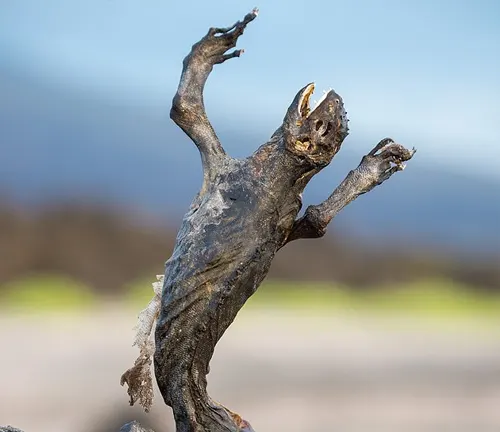
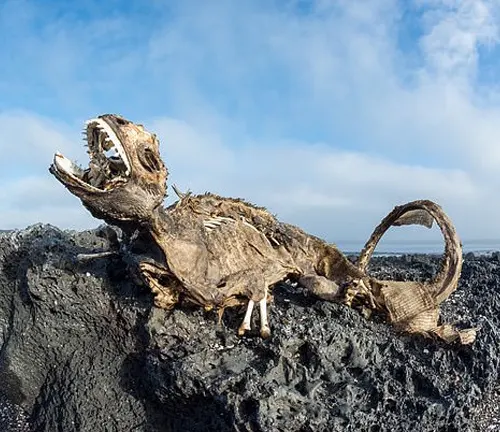
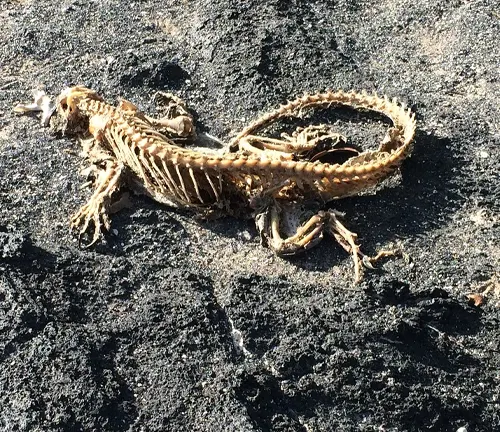
Introduced Predators
One of the primary threats to marine iguanas is predation by introduced species such as feral cats, rats, and dogs. These predators prey on eggs, hatchlings, and sometimes even adult iguanas, leading to population declines in certain areas.
Habitat Destruction
Human activities, including urban development, tourism infrastructure, and habitat degradation, pose significant threats to marine iguana habitats. Coastal construction projects, pollution, and habitat destruction disrupt nesting sites and foraging grounds, further exacerbating population declines.
Climate Change
Climate change and its associated impacts, including rising sea levels, ocean acidification, and increased frequency of extreme weather events, pose significant threats to marine iguana populations. Changes in sea temperature and habitat loss may affect food availability and nesting sites, leading to reduced reproductive success and population declines.
Overharvesting
Although hunting of marine iguanas is prohibited by law in the Galapagos Islands, illegal poaching still occurs, particularly for the pet trade and traditional medicine. Overharvesting can have detrimental effects on local populations, leading to declines in genetic diversity and overall population health.
Conservation Status
The marine iguana is listed as “Vulnerable” on the International Union for Conservation of Nature (IUCN) Red List of Threatened Species. This designation reflects the species’ susceptibility to various threats, including habitat loss, predation, and climate change, as well as ongoing conservation efforts to protect and preserve its populations.
Conservation Efforts
Several conservation initiatives are underway to protect marine iguana populations and their habitats in the Galapagos Islands. These efforts include habitat restoration, invasive species control, monitoring of population trends, and public education and awareness programs to promote responsible ecotourism practices.
Interaction with Humans
- Tourism Impact: The Galapagos Islands are a popular tourist destination, attracting thousands of visitors each year who come to observe the unique wildlife, including marine iguanas. While tourism provides economic benefits to local communities, it also brings potential risks to marine iguana populations, such as habitat disturbance, pollution, and trampling of nesting sites.
- Responsible Ecotourism: To minimize negative impacts on marine iguanas and their habitats, responsible ecotourism practices are essential. These practices include maintaining a respectful distance from wildlife, staying on designated trails and viewing platforms, and following guidelines provided by trained naturalist guides.
- Research and Monitoring: Scientists and researchers conduct ongoing studies to monitor the behavior, ecology, and population trends of marine iguanas in the Galapagos Islands. This research provides valuable insights into the species’ interactions with humans and helps inform conservation management strategies.
- Educational Outreach: Public education and awareness programs play a crucial role in fostering understanding and appreciation for marine iguanas and their habitats. Educational initiatives aim to promote conservation ethics, raise awareness about the importance of preserving biodiversity, and encourage sustainable practices among visitors and local communities.
- Conservation Partnerships: Collaboration between government agencies, conservation organizations, and local communities is vital for effective marine iguana conservation. Partnerships facilitate coordinated efforts to protect critical habitats, mitigate threats, and implement conservation measures that benefit both wildlife and people.
- Illegal Activities: Despite protective regulations, marine iguanas are still vulnerable to illegal activities such as poaching, habitat destruction, and wildlife trafficking. Strengthening law enforcement measures and increasing public awareness about the importance of protecting marine iguanas are essential for combating these threats.
Fascinating Facts
- Marine iguanas can hold their breath for up to 30 minutes, enabling them to dive to depths of over 15 meters in search of food.
- Despite their clumsy appearance on land, marine iguanas are surprisingly agile swimmers, using their powerful tails to propel themselves through the water.
- Charles Darwin was captivated by the marine iguanas during his visit to the Galapagos Islands, noting their unique adaptation to their oceanic environment in his seminal work, “On the Origin of Species.”
Different Species
The marine iguana, scientifically known as Amblyrhynchus cristatus, is a unique species of iguana that is native to the Galapagos Islands. However, within the species Amblyrhynchus cristatus, there are no recognized subspecies or distinct variations.
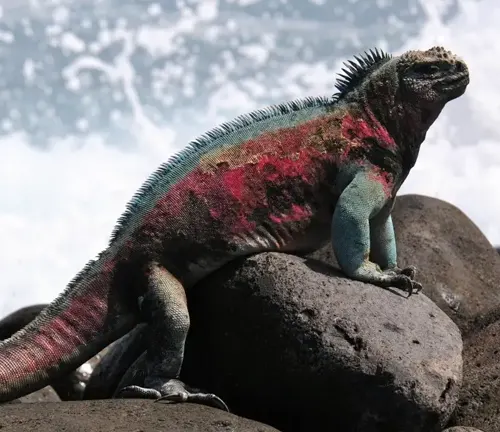
Frequently Asked Questions (FAQs)
- What is the main food source for marine iguanas?
Marine iguanas primarily feed on marine algae, which they scrape off rocks in coastal areas. - How long can marine iguanas hold their breath underwater?
Marine iguanas can hold their breath for up to 30 minutes, enabling them to dive to considerable depths in search of food. - Do marine iguanas migrate between islands?
Some marine iguanas are known to migrate between islands within the Galapagos Archipelago, although the extent and frequency of these migrations vary among populations. - Are marine iguanas solitary or social animals?
Marine iguanas are generally solitary animals, but they may congregate in large groups during breeding season or while basking on sunny shores. - What role do marine iguanas play in the ecosystem of the Galapagos Islands?
Marine iguanas are considered keystone species in the Galapagos ecosystem, as they help maintain the balance of marine algae populations through grazing, which in turn supports other species in the food chain. - Are marine iguanas affected by climate change?
Climate change poses threats to marine iguanas, including changes in sea temperature affecting their food sources and habitat, and increased frequency of extreme weather events impacting nesting sites. - How do marine iguanas communicate with each other?
Marine iguanas use various visual cues and displays, such as head bobbing and throat puffing, to communicate territorial boundaries and reproductive status. - Do marine iguanas hibernate during the colder months?
Marine iguanas do not hibernate but may become less active during cooler periods, relying on basking in the sun to regulate their body temperature. - Can marine iguanas be kept as pets?
Due to their specialized dietary and habitat requirements, marine iguanas are not suitable as pets and are protected by conservation laws in their native habitat. - How do marine iguanas defend themselves against predators?
Marine iguanas use their sharp claws and agility to evade predators, while their dark coloration helps them blend into their rocky coastal habitats, providing camouflage.


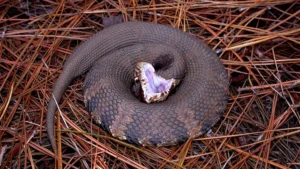

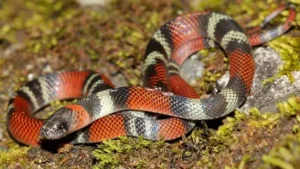

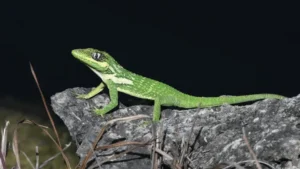
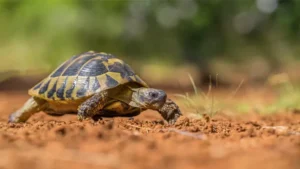
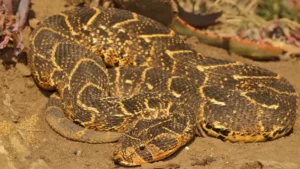
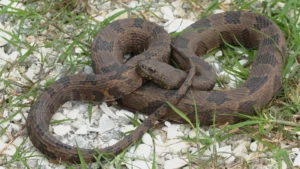



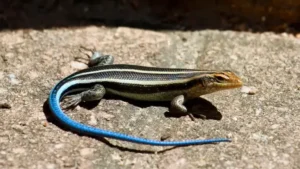
Leave your comment